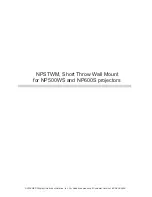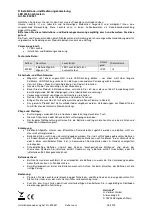
11
Entering the Water
1.
If possible, we recommend entering the water without your housing
to ensure that you are comfortable and your life-saving equipment
is in working order. Once you are stable, have someone pass your
camera housing to you.
2.
Submerge the housing at the surface of the water and visually
confirm that there are no signs of water intrusion or a steady stream
of bubbles coming from one of the housing seals. If water does
appear to be entering the housing, point the lens port downward
and return the housing to the surface as quickly as possible. Always
observe all necessary safety precautions. NEVER ascend faster
than accepted safety limits.
3.
Use your hand to gently flush away any small bubbles that may be
on the face of the lens port. Bubbles will produce soft focus spots in
your photo or video.
Built-in Flash and External Strobe Use
About the Built-In Flash
For the best color and clarity, we recommend adding a filter, strobe,
or constant-on light. Due to the position of the camera’s flash in
relation to its lens, the built-in flash is not suitable to illuminate photos
underwater. The built-in flash may be used to trigger external strobe(s)
via fiber optic cord. Two ports are provided for the connection of up to
two fiber optic cords.
We recommend attaching an external strobe for the optimal color
and clarity in a wide variety of shooting situations, including daylight
photography.


































